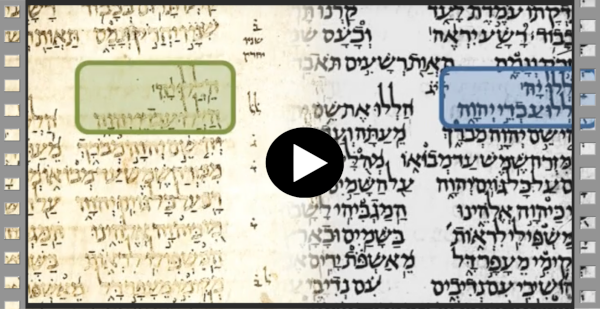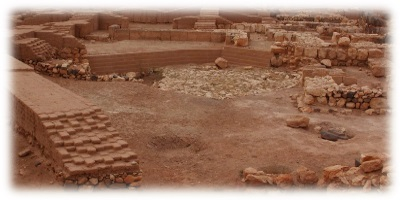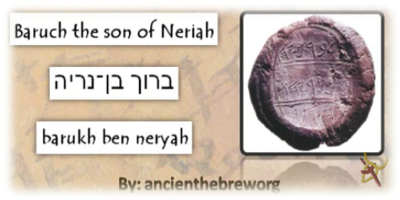You may download this video (donations accepted) by right-clicking the image below and selecting "Save Link As."

The Hebrew texts of the Bible were originally written using only the 22 letters of the Hebrew alphabet, which represent consonantal sounds. Examples of this type of writing can be found in the Dead Sea Scrolls. Since no vowel sounds were originally included in the text, they had to be memorized.
Around the 10th century AD, a group of Jewish scribes called the Masorites created a system of dots and dashes, called nikkudot or vowel pointings, which they added to the Hebrew text. These vowel pointings supplied the missing vowel sounds in order to codify the pronunciation. The Masorites also included notes in the margins of the text.
Prior to the discovery of the Dead Sea Scrolls, the oldest known Hebrew manuscript was the Masoretic text called the Aleppo Codex, written around 920 AD. This text is considered the most authoritative Hebrew manuscript, and all future editions are based on it.
Another important Masoretic text is the Leningrad Codex, written in 1008 AD. Both the Aleppo Codex and the Leningrad Codex are referred to as Ben-Asher texts, as they come from the Ben-Asher tradition of the Masorites. These texts are virtually identical, with the only differences being in paragraph locations and vowel pointings—the actual texts themselves are the same.
As an example, on the left is the Aleppo Codex, and on the right is the Leningrad Codex. Psalm 113:1 is highlighted in both manuscripts, and as you can see, they are identical. In 1947, portions of the Aleppo Codex were burned in a fire, so the Leningrad Codex is now used as the authoritative text for the missing portions.
The next major editions of the Masoretic text are the Mikraot Gedolot, meaning "Rabbinic Bibles." These Hebrew texts are again identical to the Aleppo and Leningrad Codices in terms of the base text but include variations in the vowel pointings, paragraph locations, and marginal notes, along with the addition of commentaries. One of these Rabbinic Bibles is Jacob Ben Chayyim's Rabbinic Bible, first published by Daniel Bomberg in 1525.
It is this Ben Chayyim Rabbinic Bible that the King James translators used for their translation. There are only nine textual differences between the Ben Chayyim text and the Ben-Asher texts of the Aleppo and Leningrad Codices:
- 1 Kings 20:38
- Proverbs 8:16
- Isaiah 10:16
- Isaiah 27:2
- Isaiah 38:14
- Jeremiah 34:1
- Ezekiel 30:18
- Zephaniah 3:15
- Malachi 1:12
Other than these nine differences, all of the Masoretic texts are identical.
The next major editions of the Masoretic Hebrew Bible were the Biblia Hebraica and the Biblia Hebraica Stuttgartensia. The Biblia Hebraica was published in 1906 by Rudolph Kittel and was a copy of the Ben Chayyim Rabbinic Bible, but it did not include the marginal notes. The Biblia Hebraica Stuttgartensia was printed by Paul Kahle in 1977 and is a copy of the Leningrad Codex, but with revised marginal notes.
In both cases, the Hebrew texts of the Biblia Hebraica and the Biblia Hebraica Stuttgartensia are identical to each other and to the Ben Chayyim and Ben-Asher texts. The bottom line is that while there are many different Masoretic texts, they are all the same when it comes to the text itself.

Like what you’re discovering? Continue the journey from Bible reader to translator.
|





